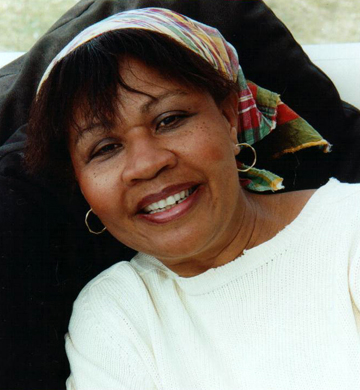
(Taken from Google Images)
“I was afraid of the dead, as
was everyone I knew. We were afraid of the dead because we never could tell
when they might show up again.” (Annie John)
These words made me salivate and I was filled with hunger to learn more of such
a strange, yet intriguing character. It was summer time, school didn’t even
begin as yet, but I could mouth the quotes as my teacher spoke in her high
pitched voice when we resumed lessons. My love affair began with Annie John,
and I would carefully read the novel while taking care not to let the tell-tale
of curry stain the white, clean pages. But
I was filled with desire to know who was the master mind and literary genius
behind Annie John.
Her name is Jamaica Kincaid, she bears my
Island’s name and indeed her writing reflects the colorfulness, vibrancy and
rich diversity found only in the Caribbean. She was born Elaine Richardson in
1949 in Antigua, the same setting in the novel Annie John. Like her character
Annie John, she was said to have a rude attitude and a trouble maker. In Annie
John, the character wanted to move somewhere where no one knew her and could
not contact, which Jamaica did, she moved to New York at 17, and like Annie
John, she cut off her family for 20 years.
She had no aspiration to become a writer, which
is surprising as she holds you with powerful descriptions and language as rich
as the greenery of the mountain side and powerful as the heat from the
penetration of the Caribbean sun. She changed her name to Jamaica because she
feared her family would disapprove her writing, but who could really mock work
so detailed that you feel the caress of the breeze she described or the
unhappiness the character felt could send you spiraling into depression,
waiting for the rain to end and set Annie John free.
Jamaica got her first piece, a short story
published in the New Yorker, and while working there she met Ted Shawn and they
were joined in holy matrimony in 1979.
After that she published ‘At the bottom of the river,” and my favorite,
Annie John in 1985. Annie John was well received for its rhythmic language, and
a theme centered on the mother-daughter relationship. Kincaid mentions that her
writing is “auto-biographical,” which is obvious after reading her
autobiography, her own mother is even named Annie, and her father is a
carpenter, like Annie John And as Earnest Hemmingway states “No subject is
terrible , if the prose is clean and honest and if it affirms grace and courage
under pressure.”
In a turn of events, Kincaid became an enemy in the literary
world for her novel “A small place,” a novel about oppression by colonizers.
The New Yorker did not want to publish her work, because of its less than
inviting tone. Even though her pieces became controversial, the power she held
for writing was still being applauded. According to Brad Goldfarb in Interview, her work is "an almost ruthless desire to get at the
truth" she came back with a tone
that matched the gentle gurgling of a river, the songs of birds in the morning
with a collection of essays called “my garden.” Although, nearly all her works
are short, they never lack luster and displays an active voice that can’t be
ignored.
Kincaid still writes at her home in Bennington and teaches creative
writing at Bennington College and Harvard University. Her current life reflects
her rebirth like that of the conclusion of Annie John “I went back to my cabin and lay down on my
berth. Everything trembled as if it had a spring at its very center. I could
hear the small waves lap-lapping around the ship. They made an unexpected
sound, as if a vessel filled with liquid had been placed on its side and now
was slowly emptying out.”
No comments:
Post a Comment